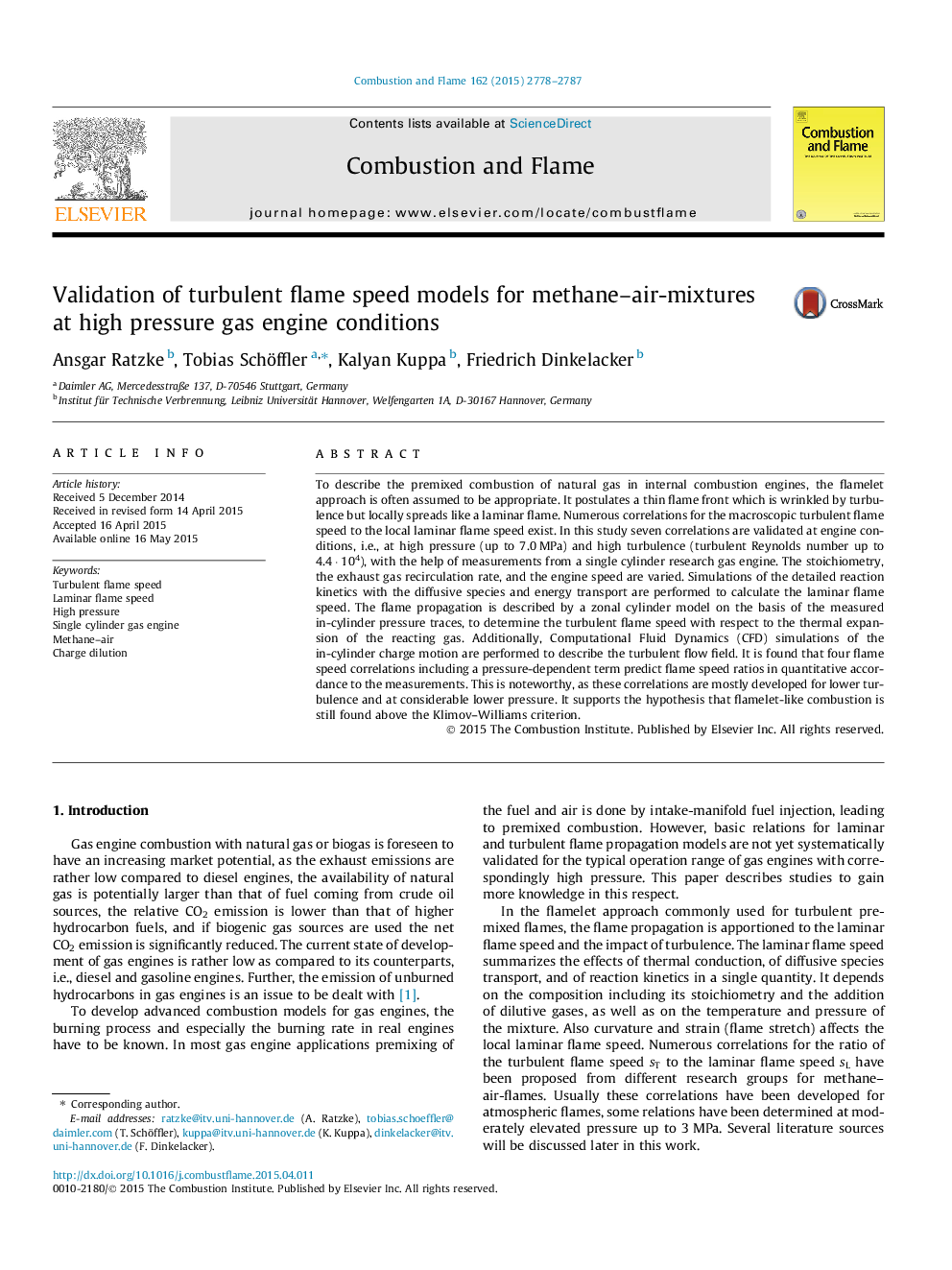| Article ID | Journal | Published Year | Pages | File Type |
|---|---|---|---|---|
| 166249 | Combustion and Flame | 2015 | 10 Pages |
To describe the premixed combustion of natural gas in internal combustion engines, the flamelet approach is often assumed to be appropriate. It postulates a thin flame front which is wrinkled by turbulence but locally spreads like a laminar flame. Numerous correlations for the macroscopic turbulent flame speed to the local laminar flame speed exist. In this study seven correlations are validated at engine conditions, i.e., at high pressure (up to 7.0 MPa) and high turbulence (turbulent Reynolds number up to 4.4 · 104), with the help of measurements from a single cylinder research gas engine. The stoichiometry, the exhaust gas recirculation rate, and the engine speed are varied. Simulations of the detailed reaction kinetics with the diffusive species and energy transport are performed to calculate the laminar flame speed. The flame propagation is described by a zonal cylinder model on the basis of the measured in-cylinder pressure traces, to determine the turbulent flame speed with respect to the thermal expansion of the reacting gas. Additionally, Computational Fluid Dynamics (CFD) simulations of the in-cylinder charge motion are performed to describe the turbulent flow field. It is found that four flame speed correlations including a pressure-dependent term predict flame speed ratios in quantitative accordance to the measurements. This is noteworthy, as these correlations are mostly developed for lower turbulence and at considerable lower pressure. It supports the hypothesis that flamelet-like combustion is still found above the Klimov–Williams criterion.
